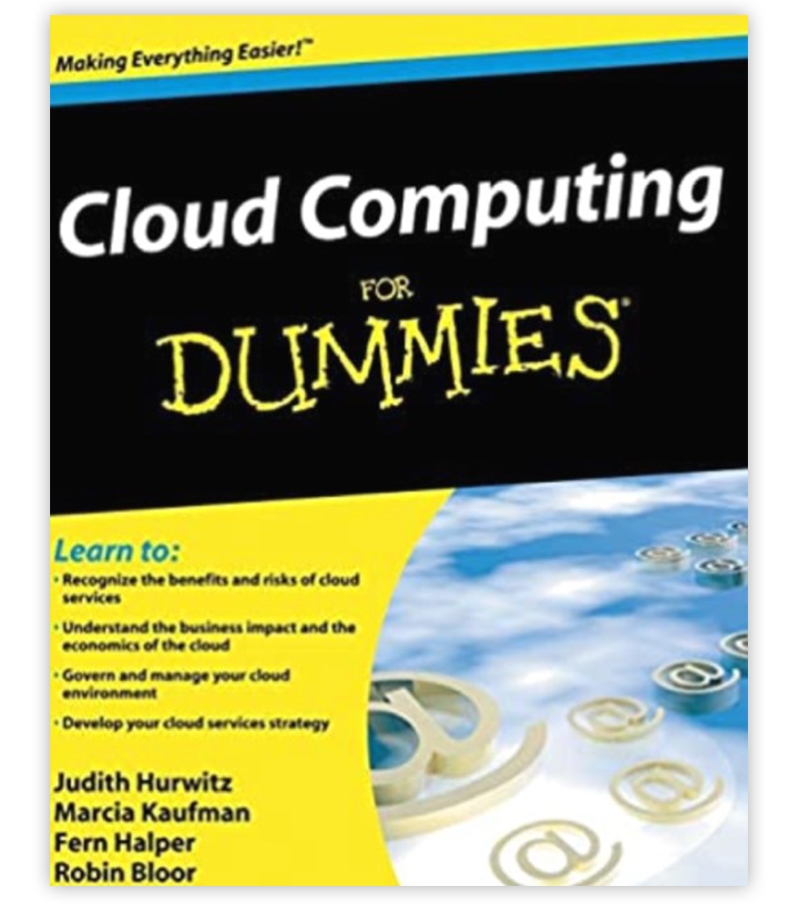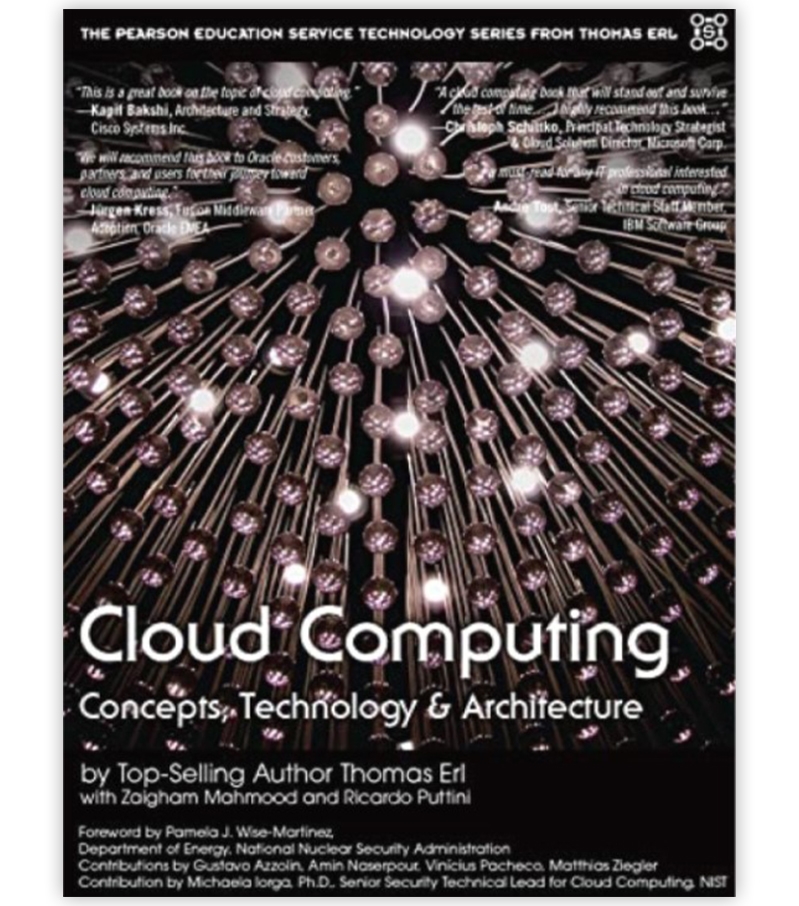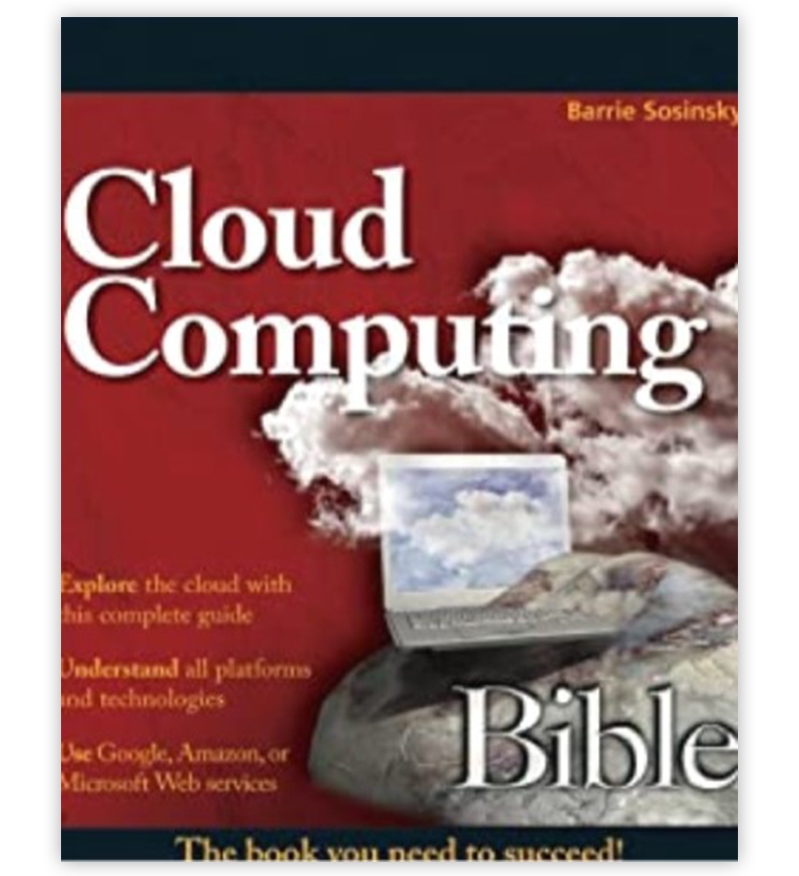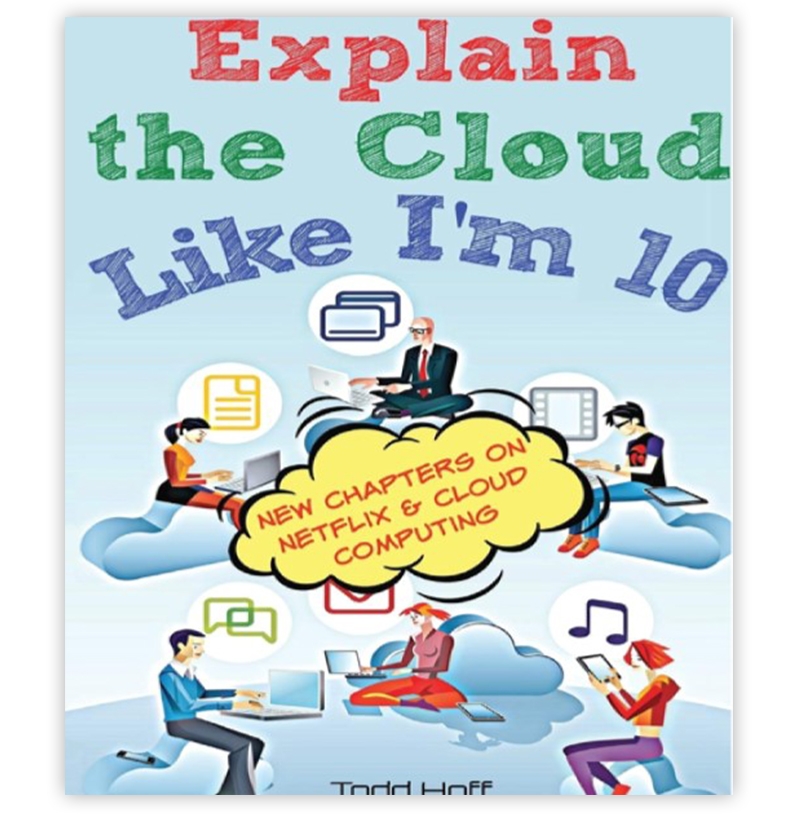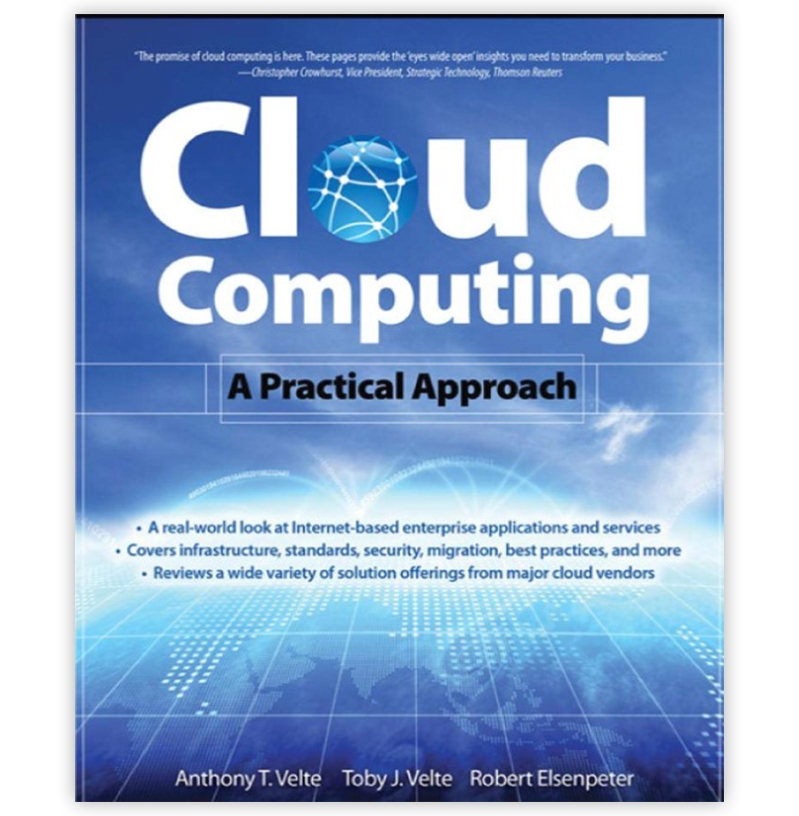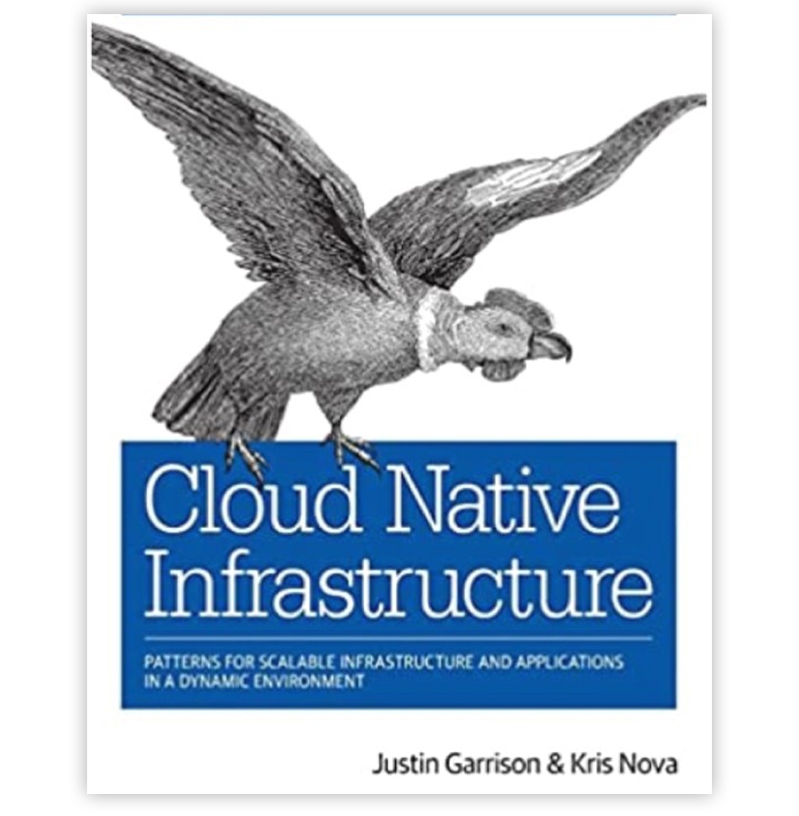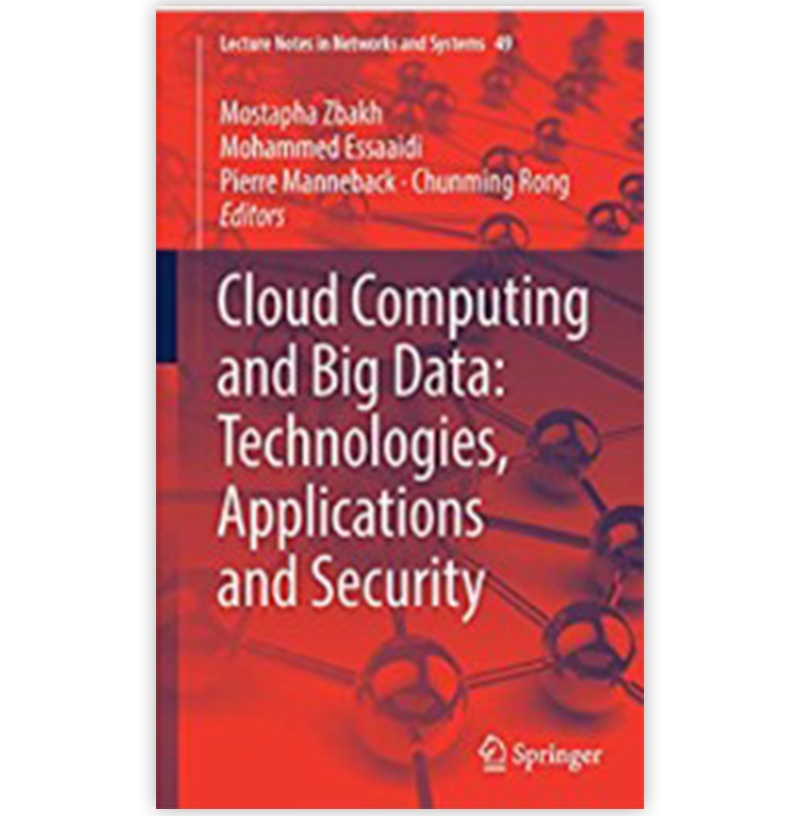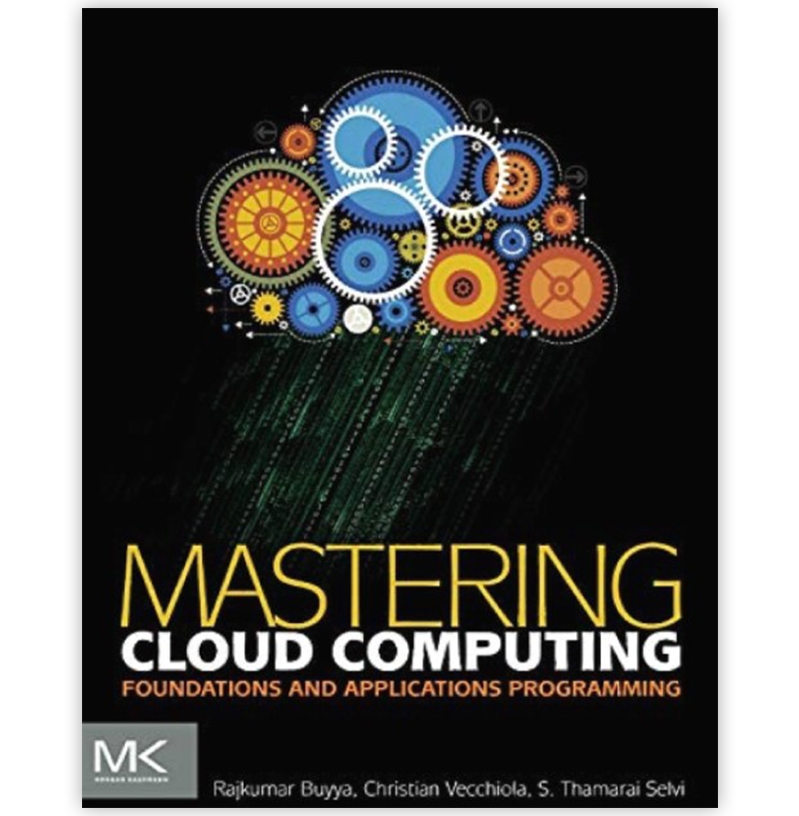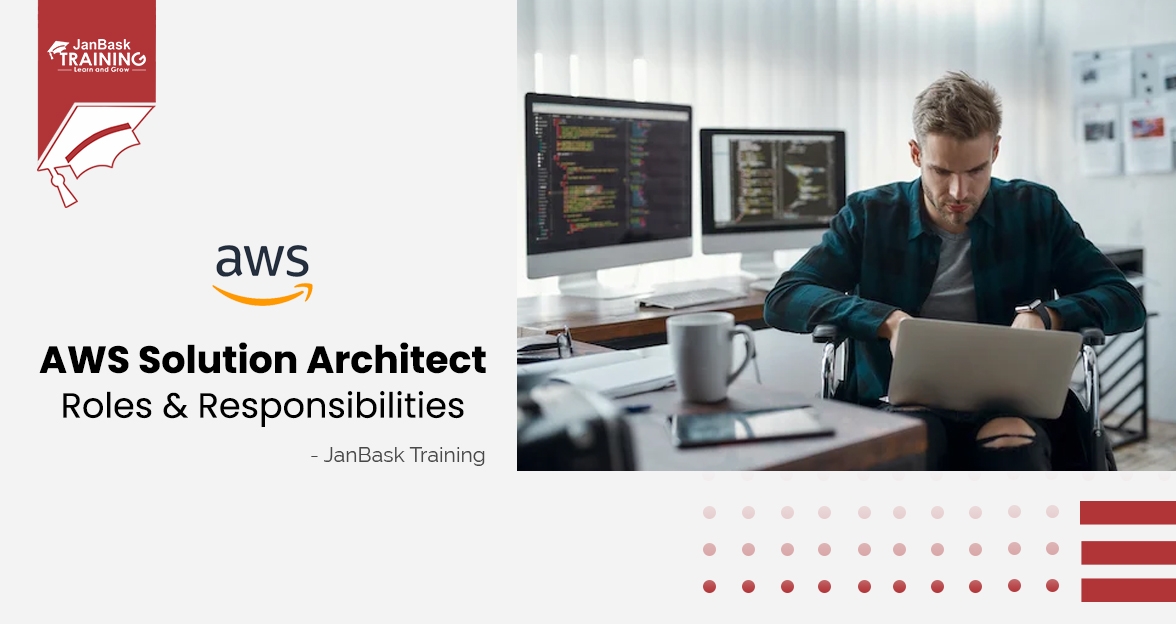Introduction
Cloud computing has become an important technology for businesses and individuals alike. It offers numerous benefits, such as scalability, cost-effectiveness, and flexibility. However, to fully understand and leverage the power of cloud computing, it is essential to have a solid understanding of its concepts, technologies, and architectures. That's where cloud computing e-books come in.
Cloud computing e-books are electronic books that cover various aspects of cloud computing, from basic concepts to advanced technologies and architectures. They provide readers with a comprehensive understanding of cloud computing and help them acquire the necessary skills to design, deploy, and manage cloud-based solutions.
In this blog post, we will explore the benefits of e-book computing and why they are a valuable resource for anyone interested in cloud computing books, so without any delay, let's dig in.
What is Cloud Computing?
For readers who need to learn what cloud computing is, here is a quick explanation: Mastering Cloud Computing delivers computing services over the internet, including servers, storage, databases, software, and other resources.
In cloud computing, users can access and use these services from anywhere with an internet connection without owning and managing their infrastructure.
Cloud computing providers offer these services on a pay-as-you-go basis, meaning that users only pay for the services and resources they use rather than investing in and maintaining their hardware and software.
Cloud computing provides many benefits, including scalability, flexibility, and cost savings. Businesses and individuals use it for various applications, including data storage, software development, and web hosting.
Indeed because of all these reasons, cloud computing has become a high in demand career for students and professionals, with an anticipated rise in jobs related to cloud management at the rate of 20% CAGR, suggested by Gartner.
We recommend to our readers that if they want to make a career in cloud computing or Software engineering, this is the right time. Just check out our online certification course, choose for yourself and get ahead of the competition.
Why are Cloud Computing Books Getting Popular?

Cloud computing has become an increasingly popular technology for businesses and individuals in recent years. As cloud computing continues to grow, there is a growing demand for knowledge and expertise.
This has led to the rise of cloud computing e-books, which offer a cost-effective and convenient way to learn about this complex and rapidly evolving technology. With the flexibility and accessibility of e-books and the up-to-date information they provide, it is no wonder that cloud computing e-books have become a popular resource for students, professionals, and anyone interested in this exciting field.
In this context, let's explore some key reasons cloud computing e-books are becoming increasingly popular.
- Increasing adoption of cloud computing: As more and more businesses adopt cloud computing, there is a growing need for knowledge and expertise in this field. E-books provide an efficient and cost-effective way to learn about cloud computing, as they can be easily downloaded and read on various devices.
- Flexibility and convenience: E-books are flexible and convenient to use, as they can be accessed from anywhere and at any time using various devices like smartphones, tablets, laptops, etc. This makes it easier for people to learn about cloud computing and keep themselves updated with the latest trends and practices.
- Cost-effective: E-books are often less expensive than traditional books, as they do not require printing and shipping costs. This makes them more accessible to a broader audience, including students and professionals who may not have the budget for expensive textbooks.
- Up-to-date information: Cloud computing is a rapidly evolving field, and e-books can be easily updated to reflect the latest developments and best practices. This ensures that readers have access to the most up-to-date information, which is crucial for staying competitive in the industry.
The increasing popularity of cloud computing and the benefits of e-books have contributed to the growth of cloud computing e-books as a valuable resource for learning about this field.
Leverage your career in Cloud Computing and get certified. Having a certification increases your chances for a job interview and makes you stand out from the crowd.
Moving further, for the convenience of our readers, we have divided the Top 10 sections into Beginners and Experts, consisting of five books you must read if you are a beginner and five books you must read if you want to advance your knowledge in cloud computing as an expert.
Top 10 E-Books You Must Read If You Want To Become A Master in Cloud Computing
Many cloud computing e-books are available for beginners, each covering different aspects of this technology.
Here are some of the top cloud computing e-books for beginners and the topics they cover:
1. Cloud Computing for Dummies by Judith Hurwitz, Robin Bloor, and Marcia Kaufman.

|
Author
|
Judith Hurwitz, Robin Bloor, and Marcia Kaufman
|
|
Publisher
|
Wiley (1 January 2009)
|
|
Language
|
English
|
|
Print Length
|
332 pages
|
|
Rating
|
4.1 / 5
|
Five reasons why you should consider reading "Cloud Computing for Dummies":
- Comprehensive introduction: This book is a comprehensive introduction to cloud computing, covering everything from the basics to advanced topics. It covers the benefits and challenges of cloud computing, different deployment models, security, and compliance issues, among other things. This book is an excellent resource if you are new to cloud computing or want to deepen your understanding of this technology.
- Beginner-friendly: The book is written in a simple and easy-to-understand language, making it accessible to beginners who may not have a technical background. The authors explain technical terms and concepts in a way that is easy to follow, making it an ideal resource for anyone just starting with cloud computing.
- Up-to-date information: Cloud computing is a rapidly evolving technology, and this book is regularly updated to reflect the latest trends and best practices. This means that the information in the book is current and relevant, which is essential when working with a constantly changing technology.
- Practical advice: Besides covering the basics of cloud computing, the book also provides practical advice on implementing and managing cloud services. It includes tips on choosing the right cloud provider, migrating to the cloud, and ensuring security and compliance when working with cloud services.
- Cost-effective: Compared to traditional textbooks or courses, "Cloud Computing for Dummies" is a cost-effective way to learn about cloud computing. You can access the book in electronic format, which is often cheaper than buying a physical copy, and you can read it at your own pace, saving you time and money in the long run.
"Cloud Computing for Dummies" is an excellent resource for anyone who wants to learn about cloud computing in a simple and accessible way. This book has something to offer for a beginner, and it is worth reading if you want to stay up-to-date with the latest trends and best practices in cloud computing.
2. Cloud Computing: Concepts, Technology & Architecture by Thomas Erl, Ricardo Puttini, and Zaigham Mahmood

|
Author
|
Thomas Erl, Ricardo Puttini, and Zaigham Mahmood
|
|
Publisher
|
PHI; 1st edition (23 May 2013)
|
|
Language
|
English
|
|
Print Length
|
528 pages
|
|
Rating
|
4.3/5
|
This book is a comprehensive guide to cloud computing, covering the fundamentals of cloud computing, different service models, deployment models, and implementation strategies. It also covers security, privacy, and compliance issues related to cloud computing.
Five reasons why you should consider reading "Cloud Computing: Concepts, Technology & Architecture":
- Comprehensive coverage: This book covers cloud computing, covering everything from basic concepts to advanced topics. It covers the history of cloud computing, the different deployment models, service models, architecture, cloud security, governance, and compliance.
- In-depth technical detail: This book provides in-depth technical detail, making it an ideal resource for professionals looking to deepen their understanding of cloud computing. It covers topics such as virtualization, containerization, cloud storage, cloud networking, and distributed computing.
- Practical guidance: The book provides practical guidance on designing, deploying, and managing cloud services. It includes best practices for architecture, security, performance, and cost optimization, as well as case studies and real-world examples.
- Authoritative source: The authors of this book are widely recognized experts in the field of cloud computing. They provide an authoritative source of information based on years of experience and research, which professionals can trust in the industry.
- Up-to-date information: The book is regularly updated to reflect the latest trends and best practices in cloud computing. This means that the information in the book is current and relevant, which is essential when working with a constantly evolving technology.
Finally, this book is an excellent resource for anyone who wants to develop a deep understanding of cloud computing. If you are a beginner, this book provides a comprehensive and authoritative source of information that can help you stay up-to-date with the latest trends and best practices in the industry.
3. Cloud Computing Bible by Barrie Sosinsky

|
Author
|
Barrie Sosinsky
|
|
Publisher
|
Wiley; 1st edition (21 December 2010)
|
|
Language
|
English
|
|
Print length
|
732 Pages
|
|
Rating
|
4.1/5
|
This book covers the basics of cloud computing, including different deployment models, service models, and cloud providers. It also covers the benefits and challenges of cloud computing, migration strategies, and the future of cloud computing.
Five reasons why you should consider reading "Cloud Computing Bible":
- Comprehensive coverage: This book covers cloud computing, covering everything from basic concepts to advanced topics. It covers cloud architecture, service models, deployment models, virtualization, containers, storage, networking, security, and governance.
- Hands-on approach: The book takes a hands-on approach, providing practical examples and step-by-step instructions on deploying and managing cloud services. It includes case studies and real-world examples showing how organizations successfully implement cloud computing.
- Expert authors: The authors of this book are recognized experts in cloud computing with years of experience working with cloud technologies. They provide an authoritative source of information that professionals can trust in the industry.
- Up-to-date information: The book is regularly updated to reflect the latest trends and best practices in cloud computing. This means that the information in the book is current and relevant, which is essential when working with a constantly evolving technology.
- Comprehensive resources: In addition to the book itself, the Cloud Computing Bible also includes online resources, such as video tutorials, sample code, and practice exams. These resources can help you further deepen your understanding of cloud computing and prepare for certification exams.
Overall, the "Cloud Computing Bible" is an excellent resource for anyone who wants to develop a deep understanding of cloud computing and learn how to deploy and manage cloud services. Whether you are a beginner or an experienced professional, this book provides a comprehensive and practical guide to cloud computing that can help you stay up-to-date with the latest trends and best practices in the industry.
4. Explain the Cloud Like I'm 10: Learn the Secrets of AWS, Azure, GCP, and K8s by Todd Hoff

|
Author
|
Todd Hoff
|
|
Language
|
English
|
|
Publisher
|
Possibility Outpost Inc. (1 January 2017)
|
|
Print length
|
290 pages
|
|
Rating
|
4.6/5
|
This book is a beginner-friendly guide to cloud computing, covering the basics, including different deployment and service models. It also covers the benefits and challenges of cloud computing and provides practical tips for implementing and managing cloud services.
Five reasons why you should consider reading "Explain the Cloud Like I'm 10":
- Gain a basic understanding of the cloud: "Explain the Cloud Like I'm 10" provides a simple and clear explanation of cloud computing. This important technology powers many of the online services we use daily. Reading this book will give you a foundational understanding of how the cloud works and its benefits.
- Learn about different cloud platforms: The book covers four popular cloud platforms: AWS, Azure, GCP, and K8s. You'll learn about the strengths and weaknesses of each platform and how they differ from one another. This knowledge can help you decide which cloud platform to use for your projects.
- Understand technical concepts in a fun and accessible way: The book uses a child-friendly tone and colorful illustrations to explain technical concepts in an engaging and easy-to-understand way. This makes it an excellent read for anyone who wants to learn about the cloud but may need more clarification on technical jargon.
- Get an overview of important cloud-related topics: Besides covering cloud platforms, the book touches on other important issues related to the cloud, such as security, serverless computing, and machine learning. This broad overview can help you identify areas you may want to explore in more detail.
- Expand your knowledge quickly: The book is relatively short and can be read in just a few hours. By investing a small amount of time, you can gain a solid foundation in cloud computing to serve you well in your personal and professional endeavors.
Overall, this book is an excellent resource for anyone new to cloud computing who wants a quick and accessible introduction. It provides a concise and practical guide to cloud computing, with real-world examples and practical advice to help you understand and implement cloud computing solutions in your work or business.
5. Cloud Computing: A Practical Approach by Toby Velte, Anthony Velte, and Robert Elsenpeter

|
Author
|
Toby Velte, Anthony Velte, and Robert Elsenpeter
|
|
Publisher
|
Osborne McGraw Hill 1st edition (16 October 2009)
|
|
Language
|
English
|
|
Paperback
|
352 pages
|
|
ISBN 10
|
0071626948
|
|
Ratings
|
4.2/5
|
This book provides the following:
· A practical guide to cloud computing.
· Covering the basics of cloud computing.
· Different deployment models.
· Service models.
It also covers the benefits and challenges of cloud computing, migration strategies, and how to build and manage cloud services.
Five reasons to consider reading "Cloud Computing: A Practical Approach."
- Practical focus: The book takes a practical approach to cloud computing, guiding how to plan, design, and implement cloud solutions. It includes case studies and examples of how real organizations have successfully implemented cloud computing, making it a useful resource for those looking to apply it in their work or business.
- Comprehensive coverage: The book covers a wide range of topics related to cloud computing, including cloud architecture, deployment models, service models, security, and cost management. This comprehensive coverage makes it a valuable resource for professionals in the field.
- Real-world experience: The authors of the book have extensive real-world experience in cloud computing, having worked with large organizations to implement cloud solutions. Their practical experience is reflected in the book, which provides valuable insights and advice for those looking to implement cloud computing.
- Up-to-date information: The book is regularly updated to reflect the latest trends and best practices in cloud computing. This means that the information in the book is current and relevant, which is essential when working with a constantly evolving technology.
- Suitable for beginners and experienced professionals: The book is ideal for both new to cloud computing and experienced professionals looking to deepen their knowledge. It provides a solid foundation for beginners, advanced topics, and insights for skilled professionals.
Overall, "Cloud Computing: A Practical Approach" is an excellent resource for anyone who wants to develop a practical understanding of cloud computing. It provides comprehensive coverage of the topic, real-world examples and practical advice to help professionals implement cloud computing solutions in their work or business.
These books provide a solid foundation for beginners who want to learn about cloud computing and explore the potential of this exciting technology. As you are done with these books now, you must consider moving on to the next phase: being an expert in cloud computing. So here we have listed the top 5 books to advance your knowledge in cloud computing as a professional
Many cloud computing e-books are available for professionals, each covering different aspects of this technology.
Here are some of the top cloud computing e-books for professionals and the topics they cover:
6. Architecting for the Cloud: AWS Best Practices by AWS Whitepapers
This e-book guides how to design and operate applications in the cloud using Amazon Web Services (AWS). It covers best practices for architecture, security, scalability, performance, and cost optimization.
Here are five reasons why you should consider reading "Architecting for the Cloud: AWS Best Practices":
- AWS focus: The book focuses on AWS, one of the most popular cloud computing platforms in use today. If you are using or planning to use AWS, this book is an essential resource for understanding best practices for designing and deploying applications in the cloud.
- Best practices: The book provides best practices for designing and deploying applications in the cloud based on AWS's extensive experience with cloud computing. Following these best practices can help you avoid common mistakes and ensure your applications are secure, scalable, and reliable.
- Real-world examples: The book includes real-world examples of how AWS customers successfully implement cloud solutions using best practices. This provides valuable insights and guidance for those looking to implement similar solutions.
- Comprehensive coverage: The book covers a wide range of topics related to cloud computing on AWS, including computing, storage, networking, security, monitoring, and automation. This comprehensive coverage makes it a valuable resource for professionals in the field.
- Suitable for both beginners and experienced professionals: The book is suitable for both new to AWS and experienced professionals looking to deepen their knowledge. It provides a solid foundation for beginners, advanced topics, and insights for experienced professionals.
"Architecting for the Cloud: AWS Best Practices" is an essential resource for anyone using or planning to use AWS for cloud computing. It provides best practices for designing and deploying applications in the cloud, with real-world examples and comprehensive coverage of critical topics.
7. Cloud Native Infrastructure: Patterns for Scalable Infrastructure and Applications in a Dynamic Environment by Justin Garrison and Kris Nova

|
Author
|
Justin Garrison and Kris Nova
|
|
Language
|
English
|
|
Publisher
|
O′Reilly; 1st edition (7 November 2017)
|
|
Print length
|
150
|
|
Rating
|
4.2/5
|
This book covers the fundamentals of cloud-native infrastructure, including designing, deploying, and managing applications in a cloud-native environment. It covers topics such as containers, microservices, serverless computing, and infrastructure as code.
Here are five reasons why you should consider reading "Cloud Native Infrastructure":
- Cloud native focus: The book is focused on cloud-native infrastructure, which is an approach to building and deploying applications that take advantage of cloud computing technologies and principles. If you are interested in building applications designed for the cloud, this book is a valuable resource.
- Practical guidance: The book provides practical guidance on building and deploying cloud-native infrastructure using modern tools and technologies such as Kubernetes, Docker, and Terraform. It includes detailed examples and case studies that illustrate key concepts and techniques.
- DevOps perspective: The book takes a DevOps perspective, emphasizing the importance of collaboration between developers and operations teams in building and deploying cloud-native infrastructure. It guides how to implement DevOps practices such as continuous integration and delivery in the context of cloud-native infrastructure.
- Security and reliability: The book covers key topics related to security and reliability in cloud-native infrastructure, such as service discovery, load balancing, and monitoring. It guides how to build resilient and secure systems in the cloud.
- Suitable for both beginners and experienced professionals: The book is suitable for both new to cloud-native infrastructure and experienced professionals looking to deepen their knowledge. It provides a solid foundation for beginners, advanced topics, and insights for experienced professionals.
"Cloud Native Infrastructure" is an excellent resource for anyone interested in building and deploying applications in the cloud. It provides practical guidance on building cloud-native infrastructure using modern tools and technologies, focusing on collaboration, security, and reliability.
8. Cloud Computing Patterns: Fundamentals to Design, Build, and Manage Cloud Applications

|
Author
|
Christoph Fehling, Frank Leymann, and Ralph Retter
|
|
Language
|
English
|
|
Publisher
|
Springer; 2014th edition (18 February 2014)
|
|
Print length
|
398
|
|
Rating
|
4.2/5
|
This book comprehensively guides cloud computing patterns and reusable solutions to common problems. It covers practices for scalability, availability, security, and cost optimization, among other things.
Here are five reasons why you should consider reading "Cloud Computing Patterns":
- Design patterns: The book focuses on design patterns for cloud computing, which are proven solutions to common problems that arise when building and deploying applications in the cloud. Understanding these patterns can help you design more effective and efficient cloud applications.
- Comprehensive coverage: The book covers a wide range of patterns for cloud computing, including patterns for application architecture, data management, security, and scalability. This comprehensive coverage makes it a valuable resource for professionals in the field.
- Practical guidance: The book provides practical guidance on how to apply cloud computing patterns in practice. It includes detailed examples and case studies that illustrate key concepts and techniques.
- Vendor-agnostic: The book is vendor-agnostic, meaning the patterns can be applied to different cloud computing platforms, such as AWS, Microsoft Azure, and Google Cloud Platform. This makes it a valuable resource for anyone working with cloud computing technologies.
- Suitable for both beginners and experienced professionals: The book is suitable for both beginners who are new to cloud computing patterns and experienced professionals looking to deepen their knowledge. It provides a solid foundation for beginners, advanced topics, and insights for experienced professionals.
This book is an essential resource for anyone working with cloud computing technologies. It provides comprehensive coverage of design patterns for cloud computing, with practical guidance and examples that can be applied in practice.
9. Cloud Computing and Big Data: Technologies, Applications, and Security by S. Srinivasan and S. Poornachandran

|
Author
|
S. Srinivasan and S. Poornachandran
|
|
Language
|
English
|
|
Publisher
|
Springer; 2019 1st edition (28 July 2018)
|
|
Print length
|
394
|
|
Rating
|
4.1/5
|
This book covers the intersection of cloud computing and big data, including related technologies, applications, and security issues. It covers data storage and processing, machine learning, and data security in the cloud.
Here are five reasons why you should consider reading "Cloud Computing and Big Data: Technologies, Applications, and Security":
- Comprehensive coverage: The book covers cloud computing and big data technologies, focusing on how these technologies can be used together. It provides a comprehensive overview of the field, including key concepts and techniques.
- Practical guidance: The book provides practical guidance on how to use cloud computing and big data technologies in practice. It includes detailed examples and case studies that illustrate key concepts and techniques.
- Security focus: The book emphasizes the importance of security in cloud computing and big data applications and provides guidance on how to build secure systems using these technologies.
- Suitable for both beginners and experienced professionals: The book is suitable for both beginners who are new to cloud computing and big data and experienced professionals looking to deepen their knowledge. It provides a solid foundation for beginners while also providing advanced topics and insights for experienced professionals.
- Emerging field: Cloud computing and big data are rapidly evolving, and professionals must stay up-to-date with the latest developments. This book provides a valuable resource for staying up-to-date with the latest technologies, applications, and security issues in cloud computing and big data.
Overall, "Cloud Computing and Big Data: Technologies, Applications, and Security" is an essential resource for anyone working with cloud computing and big data technologies. It provides comprehensive field coverage, with practical guidance, examples that can be applied in practice, and a strong focus on security.
10. Cloud Computing books: Foundations and Applications Programming by Rajkumar Buyya, Christian Vecchiola, and S. Thamarai Selvi

|
Author
|
Rajkumar Buyya, Christian Vecchiola, and S. Thamarai Selvi
|
|
Language
|
English
|
|
Publisher
|
Publisher : Morgan Kaufmann; Illustrated edition (31 May 2013)
|
|
Print length
|
468
|
|
Rating
|
4.4/5
|
This book provides an in-depth understanding of cloud computing, including service models, deployment models, and cloud platforms. It also covers programming models, tools for building cloud applications, and emerging trends in cloud computing.
Here are five reasons why you should consider reading "Mastering Cloud Computing":
- Comprehensive coverage: The book provides comprehensive coverage of the field of cloud computing, including key concepts, architectures, and technologies.
- Practical guidance: The book provides practical guidance on implementing and using cloud computing technologies, including detailed examples and case studies.
- In-depth explanations: The book explains key cloud computing technologies, including virtualization, containers, and microservices.
- Focus on best practices: The book focuses on best practices for cloud computing, including how to design and deploy cloud-based applications for optimal performance, scalability, and security.
- Suitable for both beginners and experienced professionals: The book is suitable for both beginners who are new to cloud computing and experienced professionals looking to deepen their knowledge. It provides a solid foundation for beginners, advanced topics, and insights for experienced professionals.
"Mastering Cloud Computing" is essential for anyone working with cloud computing technologies. It provides comprehensive field coverage, practical guidance and in-depth explanations of key technologies, architectures, and best practices.
These books provide valuable insights and practical guidance for professionals who want to deepen their understanding of cloud computing and stay up-to-date with the latest trends and best practices.
Benefits of Cloud Computing books?
Cloud computing e-books provide a wealth of information on the benefits of using cloud computing resources, including increased efficiency, flexibility, scalability, and cost-effectiveness. They also delve into the various cloud computing platforms, such as Amazon Web Services (AWS), Microsoft Azure, and Google Cloud Platform (GCP), to name a few. Moreover, e-books on cloud computing provide a deep dive into cloud security, compliance, and best practices, which are essential for ensuring data privacy and regulatory compliance.
In addition to learning about the technical aspects of cloud computing, e-books also provide insights into cloud-based applications such as serverless computing, machine learning, and big data analytics. These applications can help businesses leverage cloud computing resources to drive innovation and growth.
Here are some benefits of cloud computing books:
- Convenient access: Cloud computing e-books can be accessed from anywhere, as long as you have an internet connection. This makes learning about cloud computing on the go or working remotely easy.
- Cost-effective: Cloud computing e-books are often more affordable than printed books and may be free. This makes it easier to access high-quality learning resources without breaking the bank.
- Interactive features: Many cloud computing e-books include interactive elements such as quizzes, videos, and hands-on exercises. This helps reinforce learning and make the material more engaging.
- Up-to-date content: Cloud computing is a rapidly-evolving field, and e-books can be easily updated with the latest information and trends. This ensures learners access the most current information and best practices.
- Environmentally friendly: Cloud computing e-books are more sustainable than traditional printed books, which require paper, ink, and shipping. Using e-books, learners can reduce their environmental impact and contribute to a more sustainable future.
AWS Solution Architect Training and Certification
- Personalized Free Consultation
- Access to Our Learning Management System
- Access to Our Course Curriculum
- Be a Part of Our Free Demo Class
Conclusion
Cloud computing has become an important technology for businesses and individuals alike. It offers numerous benefits, such as scalability, cost-effectiveness, and flexibility. However, to fully understand and leverage the power of cloud computing, it is essential to have a solid understanding of its concepts, technologies, and architectures.
Cloud computing is a promising and exciting career choice that offers many opportunities for growth, competitive salaries, and the chance to work with cutting-edge technology. If you are interested in technology and enjoy problem-solving and innovation, a career in cloud computing could be an excellent choice.
The best way to achieve your dream is to have a solid foundation for your long-term career goal. At JanBask Training, we ensure that our students get the best industry exposure by collaborating with top industry experts in software development. You can enrol in various Cloud computing courses like AWS Developer and AWS Solution Architect designed for professionals and students who want to gain in-depth and practical knowledge in cloud computing. To know more, visit our website now.
FAQ
Q: What are cloud computing e-books?
A: Cloud computing e-books are electronic books or digital publications that cover a variety of topics related to cloud computing, such as cloud architecture, security, deployment, and best practices. These e-books can be downloaded and read on various devices, including laptops, tablets, and smartphones.
Q: Are cloud computing e-books only for IT professionals?
A: No, cloud computing e-books are not only for IT professionals. While some e-books are geared toward technical audiences, some e-books cater to business professionals, decision-makers, and individuals who want to learn more about cloud computing.
Q: Are cloud computing e-books expensive?
A: The cost of cloud computing e-books varies depending on the author, publisher, and topic covered. However, many e-books are affordable and cost less than their printed counterparts. Additionally, some e-books are available for free on websites such as Amazon or Google Books.
Q: Are cloud computing e-books relevant for small businesses?
A: Yes, cloud computing e-books are relevant for small businesses. Cloud computing technology can provide small businesses many benefits, including increased efficiency, reduced costs, and improved collaboration. E-books can help small business owners understand how cloud computing can benefit their businesses and how to implement cloud computing solutions.
Q: What topics are covered in cloud computing e-books?
A: Cloud computing e-books cover many topics, including cloud architecture, deployment models, security, best practices, automation, migration, and cost management. Some e-books also focus on specific cloud services providers, such as Amazon Web Services, Microsoft Azure, or Google Cloud Platform.
AWS Course
Upcoming Batches
Trending Courses
Cyber Security
- Introduction to cybersecurity
- Cryptography and Secure Communication
- Cloud Computing Architectural Framework
- Security Architectures and Models
Upcoming Class
5 days 30 Dec 2025
QA
- Introduction and Software Testing
- Software Test Life Cycle
- Automation Testing and API Testing
- Selenium framework development using Testing
Upcoming Class
4 days 29 Dec 2025
Salesforce
- Salesforce Configuration Introduction
- Security & Automation Process
- Sales & Service Cloud
- Apex Programming, SOQL & SOSL
Upcoming Class
1 day 26 Dec 2025
Business Analyst
- BA & Stakeholders Overview
- BPMN, Requirement Elicitation
- BA Tools & Design Documents
- Enterprise Analysis, Agile & Scrum
Upcoming Class
1 day 26 Dec 2025
MS SQL Server
- Introduction & Database Query
- Programming, Indexes & System Functions
- SSIS Package Development Procedures
- SSRS Report Design
Upcoming Class
1 day 26 Dec 2025
Data Science
- Data Science Introduction
- Hadoop and Spark Overview
- Python & Intro to R Programming
- Machine Learning
Upcoming Class
2 days 27 Dec 2025
DevOps
- Intro to DevOps
- GIT and Maven
- Jenkins & Ansible
- Docker and Cloud Computing
Upcoming Class
8 days 02 Jan 2026
Hadoop
- Architecture, HDFS & MapReduce
- Unix Shell & Apache Pig Installation
- HIVE Installation & User-Defined Functions
- SQOOP & Hbase Installation
Upcoming Class
8 days 02 Jan 2026
Python
- Features of Python
- Python Editors and IDEs
- Data types and Variables
- Python File Operation
Upcoming Class
9 days 03 Jan 2026
Artificial Intelligence
- Components of AI
- Categories of Machine Learning
- Recurrent Neural Networks
- Recurrent Neural Networks
Upcoming Class
2 days 27 Dec 2025
Machine Learning
- Introduction to Machine Learning & Python
- Machine Learning: Supervised Learning
- Machine Learning: Unsupervised Learning
Upcoming Class
15 days 09 Jan 2026
Tableau
- Introduction to Tableau Desktop
- Data Transformation Methods
- Configuring tableau server
- Integration with R & Hadoop
Upcoming Class
4 days 29 Dec 2025



